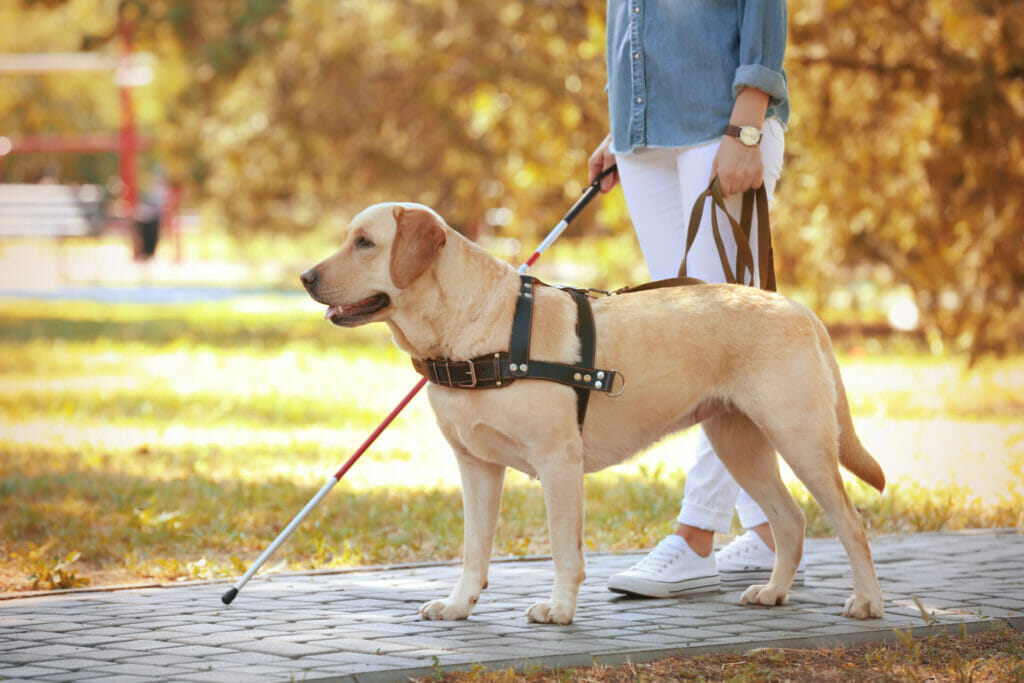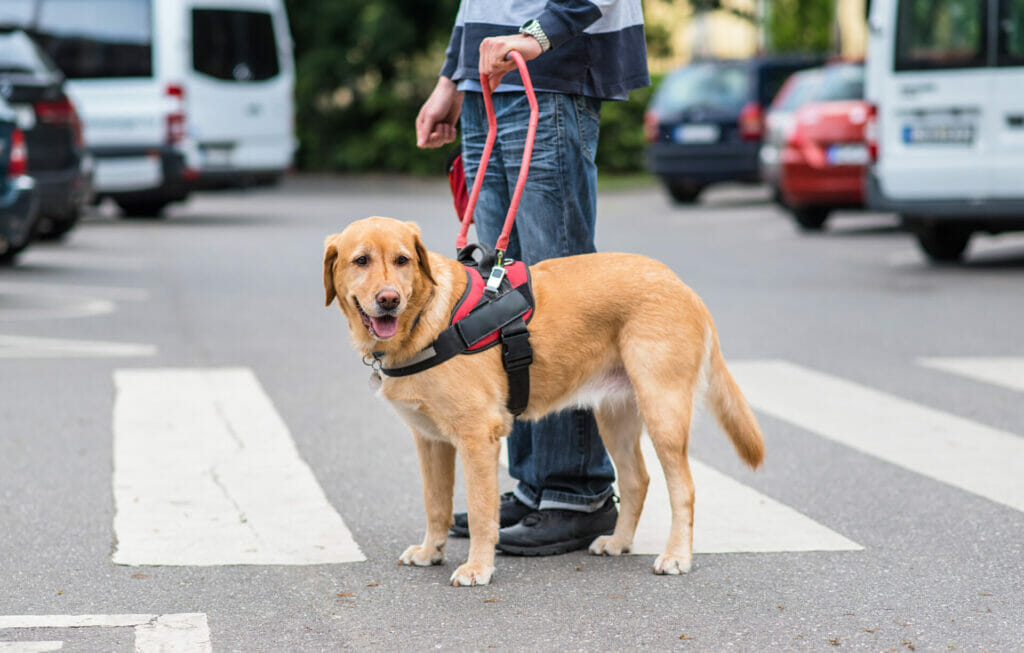Do you know the difference between a Service Dog an Emotional Support Dog and a Therapy Dog? It can be confusing especially because sometimes it seems like people use these terms interchangeably. There are big differences between these three types of working dogs and the work they do to support people.
What is a Service Dog?
Service Dogs are dogs who have been specially trained to perform specific tasks that mitigate the disability of their handler. The only people who can qualify to have service dogs are people with disabilities. However, just because someone is disabled doesn’t mean they can have a service dog, or that their pet dog is a service dog. To be a service dog these dogs need to be trained to perform tasks specific to an individual’s disability. Service dogs also need to be highly trained in what is called public access. This means that these dogs are trained to go with their handler into public places not normally welcoming to dogs such as restaurants, movie theaters, and shopping centers. Service dogs should be under control at all times and not disruptive in public spaces. The United States has no official certification or registration process for service dogs. Unfortunately, there are many misleading certification sites online that advertise they can make your dog a service dog. These are not legitimate. If you are disabled and think you could benefit from a service dog the first step is to talk with your doctor about if they think a service dog is an appropriate addition to your treatment plan. Service dogs can be trained by service dog training programs or can be owner trained with the assistance of a private dog trainer.

Common types of service dogs include (but are not limited to): seeing eye dogs who guide their blind or visually impaired handlers, hearing dogs who provide alerts to their deaf handlers, seizure alert dogs, PTSD alert and response dogs who can alert when their handler is dissociating, interrupt panic attacks and wake their handler from nightmares. Note: providing comfort or companionship is not legally a “task.” Service dogs can work with handlers who have physical or psychiatric disabilities and can be any breed or size of dog including small breeds so long as they are capable of safely doing the tasks their handler needs to mitigate their disability.
What is an Emotional Support Dog?
Emotional Support dogs or ESAs have become increasingly popular in recent years which has led to confusion about their role. Only people with a documented disability can qualify to have Emotional Support Dogs. Emotional Support Dogs provide companionship and comfort to people with disabilities when they are at home but do not accompany their owners in public. ESAs do not need any kind of specialized training; their sole responsibility is to be a companion. ESAs do not have specific training meaning they are not trained to mitigate a disability (remember comfort is not legally considered a task), and they are not trained or permitted to accompany their handlers in public to assist them. As such, Emotional Support Dogs do not have any public access rights, meaning unless a location is dog friendly (like an outside patio at a restaurant or a pet store) an Emotional Support Dog cannot accompany their owner. Prior to 2020 ESAs were permitted to fly on commercial airplanes with their owners, however, due to incidents and widespread misuse of the access that access was revoked. Emotional Support Dogs who have been prescribed by a disabled person’s medical care team are permitted to live with their owner in housing that is not typically pet-friendly so long as they do not cause a disturbance.

What Is A Therapy Dog?
Therapy dogs can be any size or breed of dog. Therapy dogs volunteer along with their owner/handler to go into schools, hospitals, assisted living facilities, and other public places to provide comfort and companionship to students and residents. Dogs have been shown to have a positive impact on people’s health and therapy dogs can be a comfort and support to a wide range of people. Therapy dogs must have a very calm and stable temperament. These dogs are then specifically trained to be comfortable with interacting with a wide range of people, remaining calm around medical equipment, and going into different public places such as hospitals and schools. Therapy dogs along with their owner/handler visit libraries, schools, hospitals, and the aftermath of disasters where they and their handlers are invited, guests. Therapy dogs are gentle visitors to groups of people who are sick or institutionalized. To begin working therapy dogs must be certified by a national organization that will conduct temperament and training testing of any prospective therapy dog. If you’re interested in getting involved with therapy dog training and visits these national organizations will be able to help connect you to local groups to begin training and temperament assessment. Therapy dogs can be invited to places like hospitals and schools however they do not generally have public access rights. Meaning, unless they are invited guests of a facility and will be there working, therapy dogs cannot accompany their handlers to places that aren’t dog-friendly, airplanes, restaurants, etc.

Although all our dogs provide emotional support not all dogs are legally Emotional Support Dogs. It’s very important that if you see a service dog in public that you do not approach, distract, or talk to the dog. Service dogs have important jobs to do to keep their disabled handlers safe. Even a well-intentioned greeting can distract a dog and lead to their handler being in danger. It’s equally as important to not pretend your dog is a service dog to try to bring them places with you. Pretending your dog is a service dog is against the law in many places and can impact the safety of legitimate service dogs.




















